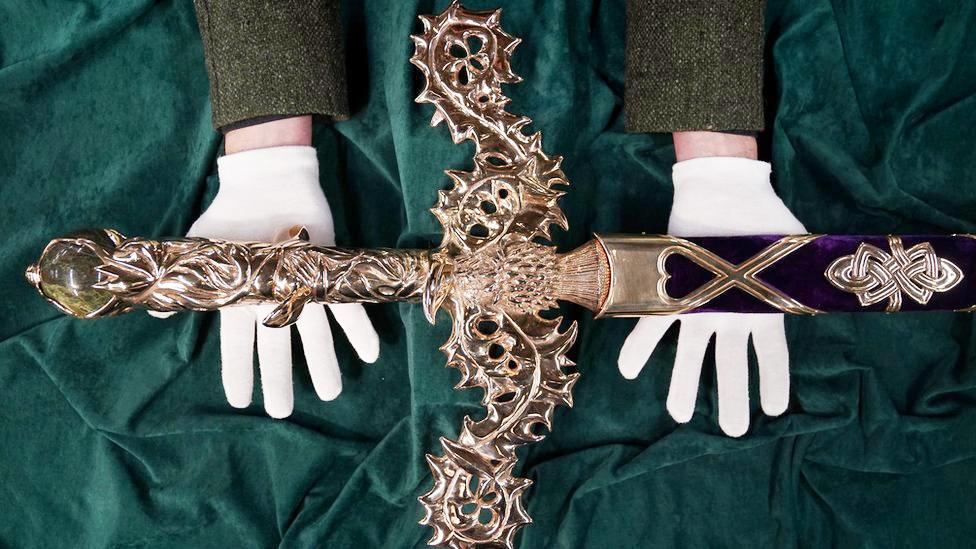King Charles III: Special Edinburgh day ends with gun salute and flypast
- Published
WATCH: Coronation celebrations in Scotland as King Charles receives nation's crown jewels
King Charles III has been presented with Scotland's crown jewels in Edinburgh in a ceremony to mark his Coronation.
He received the crown and sceptre which form part of the Honours of Scotland.
The national thanksgiving service at St Giles' Cathedral also featured a new sword named after the late Queen Elizabeth.
But a day of pageantry was also marked by protests along the Royal Mile during the celebrations.
Police Scotland later confirmed four people were arrested during the event and a further four were issued with a recorded police warning.
Red Arrows flypast and 21-gun salute
The service echoed an event held in 1953 to celebrate Queen Elizabeth II's accession to the throne.
Before the service the crown jewels were brought from Edinburgh Castle to St Giles' in a procession down the Royal Mile involving about 100 people from various aspects of Scottish life.
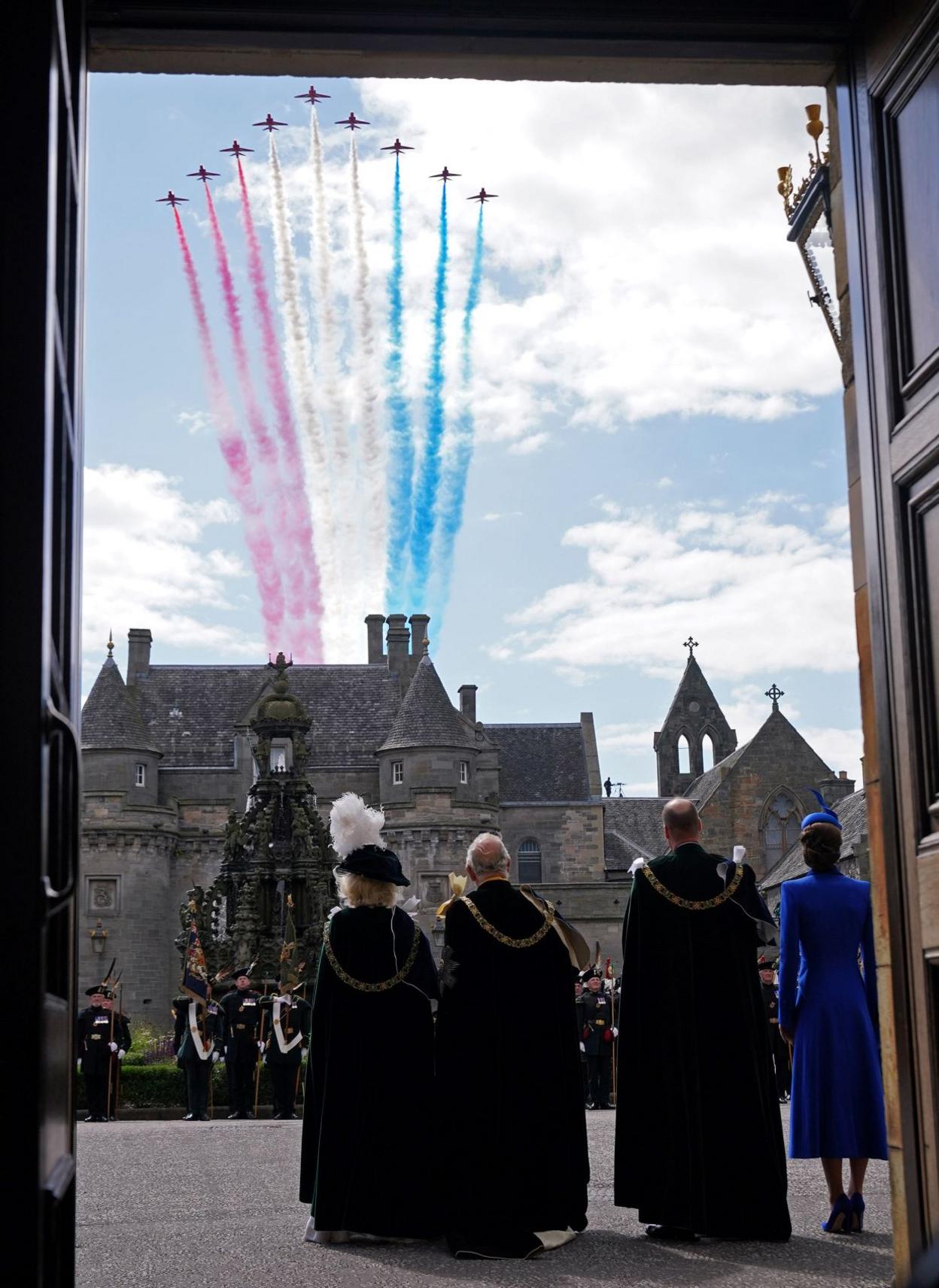
King Charles III, Queen Camilla and the Prince and Princess of Wales watched the Red Arrows flypast at the end of the Edinburgh celebration
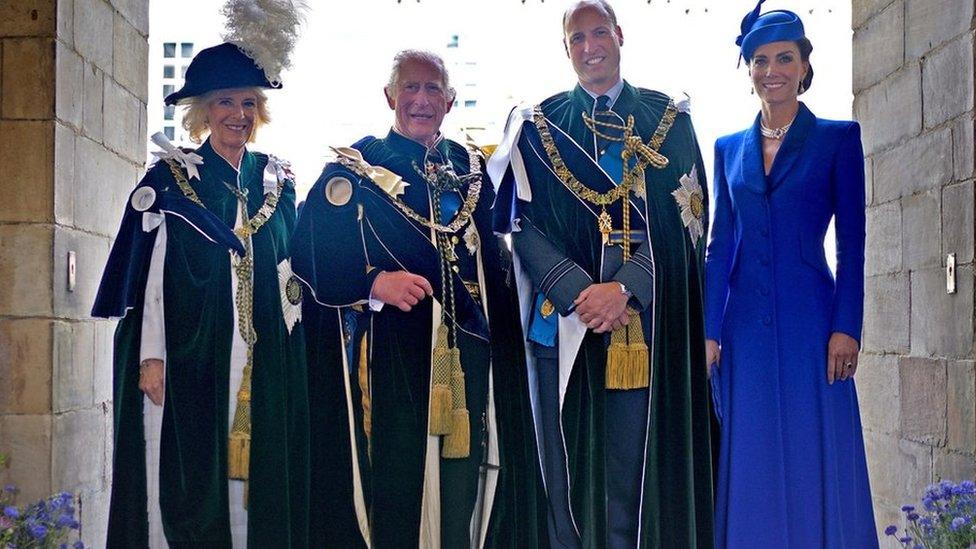
The four Royals attended the thanksgiving service at St Giles' Cathedral in Edinburgh
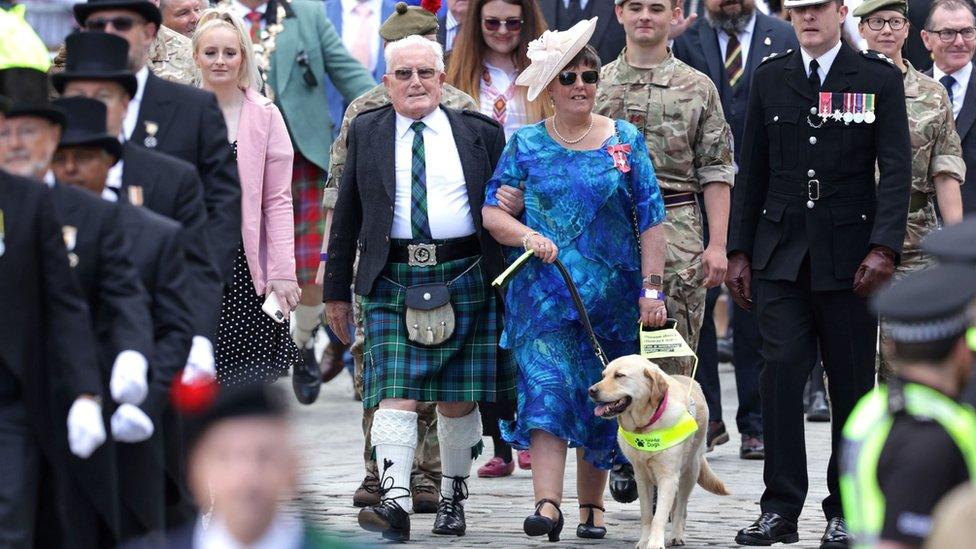
More than 700 members of the Royal Navy, British Army and Royal Air Force were part of the procession.
The King and Queen Camilla left the Palace of Holyroodhouse - their official Scottish residence - by car for a separate procession up the Royal Mile to the Kirk.
They were joined by the Prince and Princess of Wales, who are known in Scotland as the Duke and Duchess of Rothesay.
Three pipers from King Charles' former school, Gordonstoun, played during the final stage of the procession.
The Stone of Destiny - which was taken to London for the King's Coronation at Westminster Abbey in May - has been returned to Edinburgh and also played a part in the service.
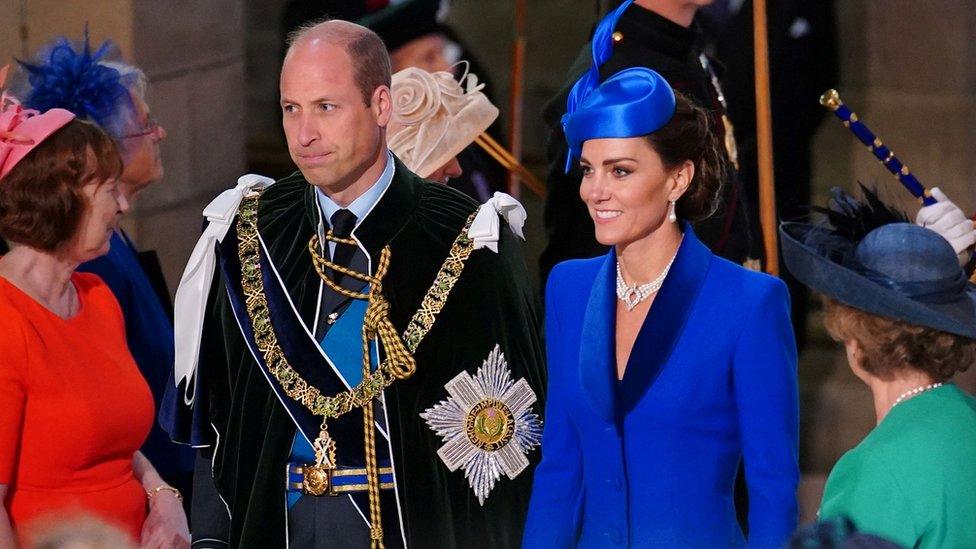
The Prince and Princess of Wales, known as the Duke and Duchess of Rothesay while in Scotland, attended the ceremony

Scotland's first minister Humza Yousaf was among the dignitaries attending the ceremony
The moderator of the General Assembly of the Church of Scotland, Rt Rev Sally Foster-Fulton preached the sermon.
The crown jewels were presented to the King by the Very Reverend Prof David Fergusson, Dean of the Chapel Royal and Dean of the Order of the Thistle.
A 21-gun salute was fired from Edinburgh Castle before the royal procession travels back to the Palace of Holyroodhouse.
There was also a flypast over Edinburgh by the RAF Red Arrows.
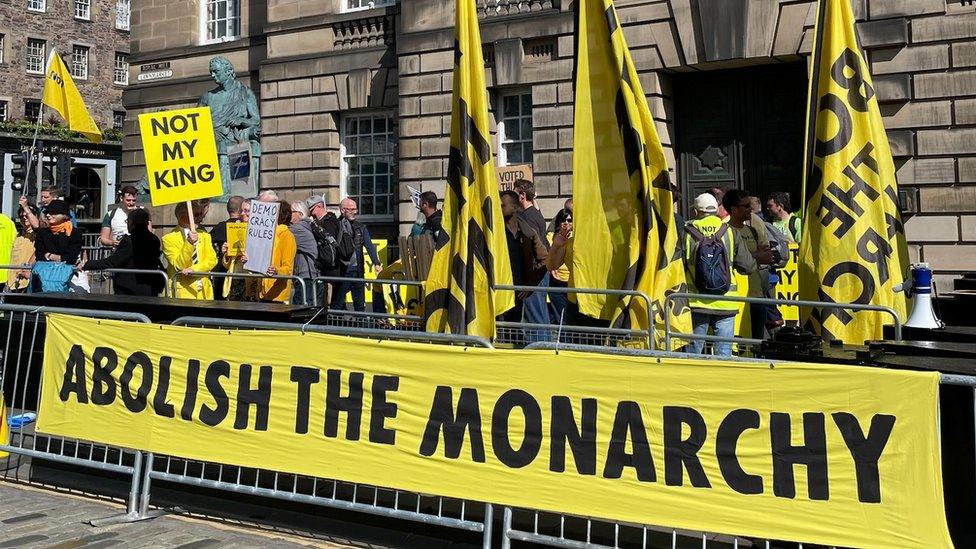
A group of anti-monarchy protestors from UK campaign Republic has gathered outside St Giles' Cathedral
Earlier a group of protesters from the UK anti-monarchy campaign Republic gathered outside St Giles' Cathedral.
A separate rally organised by Scottish pressure group Our Republic took place outside the Scottish parliament.
The co-leaders of the Scottish Greens, Patrick Harvie and Lorna Slater, who are both outspoken republican MSPs as well as government ministers, addressed this rally.
Mr Harvie told the crowds that "it's really important for those who want an elected head of state to be heard".
Police said two women, aged 20 and 21, were arrested in connection with a breach of the peace after allegedly attempting to climb over a crowd safety barrier on the Royal Mile.
During the celebrations two men were also arrested, one for theft and another on an outstanding warrant.
Separately, three men and a woman were arrested for alleged threatening behaviour and failing to desist.
But officers confirmed all four were later issued with a recorded police warning.
What are the Honours of Scotland?
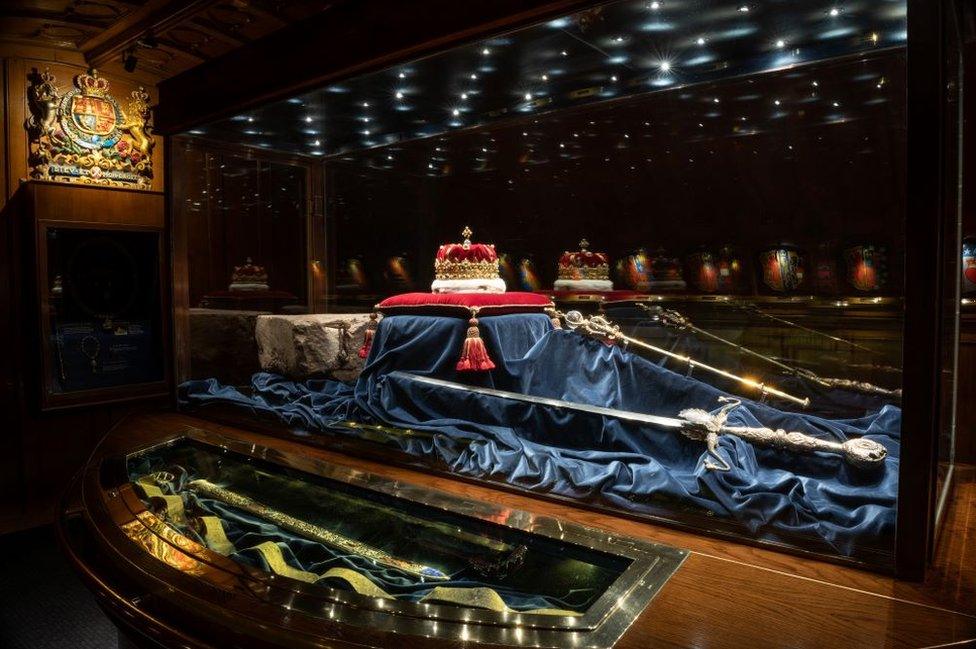
The Honours of Scotland are usually on display at Edinburgh Castle
Made of gold, silver and precious gems, they are the oldest crown jewels in Britain and comprise the priceless crown, sceptre and sword of state.
They are items of immense significance and many will remember the Crown of Scotland sitting atop the Queen's coffin when she lay at rest at St Giles' Cathedral.
The crown was made for James V, who first wore it at the Coronation of Queen Mary of Guise in 1540.
Mary Queen of Scots was the first to be crowned using the new crown and sceptre together, in 1543. The origins of the sceptre are less certain - it may have been a papal gift to James IV.
However, the sword King Charles was presented with is brand new, and commissioned because the existing 16th Century sword is too fragile to handle.
Named after his late mother, it is called the Elizabeth sword.
Turbulent past
The Honours have had a turbulent past. They were removed from the castle and hidden in 1651-60 to keep them from Oliver Cromwell's army.
In 1707, following the Act of Union between England and Scotland, they were locked in a chest and sealed away.
In 1818, Sir Walter Scott, the famous novelist, rediscovered the Honours - along with a mysterious silver wand.
The Honours of Scotland and their accompanying exhibition are located on the first floor of the Royal Palace on the east side of Crown Square at Edinburgh Castle.

Sign up for our morning newsletter and get BBC News in your inbox.

Related topics
- Published5 July 2023
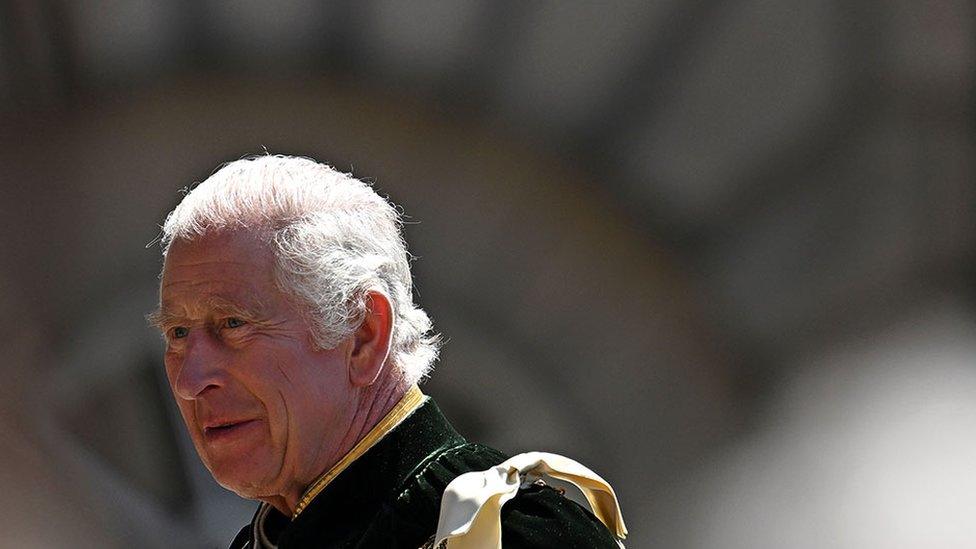
- Published3 July 2023
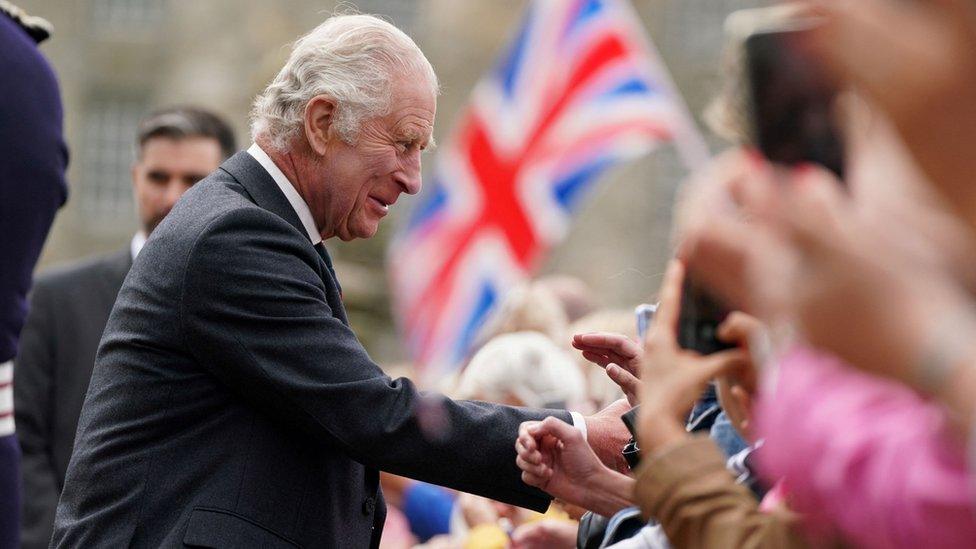
- Published30 June 2023
